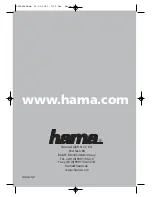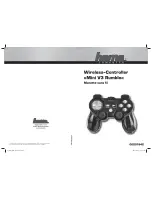
Sensor wiring
See Table 7 for information about wire gauge and
maximum sensor wire length. See Table 16 for
information about the temperature sensor’s technical
specifications.
Observe the following guidelines when you wire sensors
to the A525 Fermentation Controller:
• Sensor leads are not color coded or polarity-specific;
you can connect either of the two sensor leads to the
Sn1 terminal and a C terminal.
• Select only the sensor that operates in the ambient
operating range that your A525 Fermentation
Controller monitors and controls.
• Keep the sensor leads as short as possible in your
application. The additional resistance in long sensor
cables can create an offset between the actual
temperature and the displayed temperature. It is best
practice to solder or butt splice connections.
• Use 0.30 mm
2
(22 AWG) stranded-wires and twisted-
leads cable with a cable shield to extend sensor cable
runs.
Table 7: Maximum recommended sensor cable lengths
and wire sizes
Wire gauge
Maximum sensor cable length
1
1.3 mm
2
(16 AWG)
150 m (492 ft)
0.82 mm
2
(18 AWG)
100 m (328 ft)
0.52 mm
2
(20 AWG)
60 m (196 ft)
0.33 mm
2
(22 AWG)
40 m (131 ft)
1
At the listed cable lengths, there is less than 0.6°C (1°F) error
between the temperature sensed at the TE-631AP-1 sensor
and the temperature displayed on the LCD.
Important:
When you connect sensors with
shielded cable to a control, connect the cable shield
drain lead to one of the C terminals on the input
sensor terminal block. Do not connect the shield at
any other point along the cable. Isolate and insulate
the shield drain at the sensor end of the cable.
Connecting a cable shield at more than one point
can enable transient currents to flow through the
sensor cable shield, which can cause erratic control
operation.
Relay electrical ratings
Table 8 to Table 12 provide the electrical ratings for the
control relays in the A525 Fermentation Controller. See
Table 15 for the relay’s duty cycle ratings.
Table 8: SPST cooling solenoid relay electrical ratings
Agency and file UL
EN
Applied AC
voltage at 50/60
Hz
24 VAC
120 VAC
240 VAC
240 VAC
Pilot duty VA
(N.O.)
125 VA at 24 VAC–240 VAC
Number of
cycles
100,000
Table 9: SPST heating solenoid relay electrical ratings
Agency and file UL
EN
Applied AC
voltage at 50/60
Hz
24 VAC
120 VAC
240 VAC
240 VAC
Pilot duty VA
(N.O.)
125 VA at 24 VAC–240 VAC
Number of
cycles
100,000
Table 10: SPDT alarm relay electrical ratings
Agency and file UL
EN
Applied AC
voltage at 50/60
Hz
24 VAC
120 VAC
240 VAC
240 VAC
Full load
amperes N.O.
(N.C)
--
9.8 A
4.9 A
4.9 A
Locked rotor
amperes N.O.
(N.C.)
--
58.8 A
29.4 A
29.4 A
Resistive
amperes N.O.
(N.C.)
10 A
Pilot duty VA
N.O. (N.C.)
125 VA at 24 VAC–240 VAC
Number of
cycles
30,000
Table 11: SPST pump-over relay electrical ratings
Agency and file UL
EN
Applied AC
voltage at 50/60
Hz
24 VAC
120 VAC
240 VAC
240 VAC
Pilot duty VA
(N.O.)
125 VA at 24 VAC–240 VAC
Number of
cycles
30,000
Table 12: SPST ASV relay electrical ratings
Agency and file UL
EN
Applied AC
voltage at 50/60
Hz
24 VAC
120 VAC
240 VAC
240 VAC
Pilot duty VA
(N.O)
125 VA at 24 VAC–240 VAC
Number of
cycles
30,000
Repair information
Do not attempt to repair the A525 Series Electronic
Fermentation Tank Controller. In case of a defective or
improperly functioning controller, contact your nearest
authorized Johnson Controls
®
or PENN
®
distributor or
sales representative.
A525 Fermentation Tank Controller Installation Guide
8






























